Age as a Dynamic Moderator of Relations between Exposure to Political Conflict and Mental Health in Belfast, Northern Ireland
Abstract
:1. Introduction
2. Materials and Methods
Statistical Analysis
3. Results
3.1. Descriptive Statistics
3.2. Time Varying Effects for the Full Sample
3.3. Time Varying Effects for Catholics and Protestants Separately
4. Discussion
5. Conclusions
Author Contributions
Funding
Institutional Review Board Statement
Informed Consent Statement
Data Availability Statement
Acknowledgments
Conflicts of Interest
References
- Cummings, E.M.; Merrilees, C.E.; Taylor, L.K.; Mondi, C.F. Developmental and social–ecological perspectives on children, political violence, and armed conflict. Dev. Psychopathol. 2016, 29, 1–10. [Google Scholar] [CrossRef] [PubMed] [Green Version]
- Cummings, E.M.; Merrilees, C.E.; Taylor, L.K.; Mondi, C.F. Political Violence, Armed Conflict, and Youth Adjustment: A Developmental Psychopathology Perspective on Research and Intervention; Springer International Publishing: Cham, Switzerland, 2017. [Google Scholar]
- Cicchetti, D. The emergence of developmental psychopathology. Child Dev. 1984, 55, 1–7. [Google Scholar] [CrossRef] [PubMed]
- Sroufe, L.A.; Rutter, M. The domain of developmental psychopathology. Child Dev. 1984, 55, 17–29. [Google Scholar] [CrossRef] [PubMed]
- Tan, X.; Shiyko, M.P.; Li, R.; Li, Y.; Dierker, L. A time-varying effect model for intensive longitudinal data. Psychol. Methods 2012, 17, 61–77. [Google Scholar] [CrossRef] [PubMed] [Green Version]
- Zahn-Waxler, C.; Shirtcliff, E.A.; Marceau, K. Disorders of childhood and adolescence: Gender and psychopathology. Annu. Rev. Clin. Psychol. 2008, 4, 275–303. [Google Scholar] [CrossRef] [Green Version]
- Muldoon, O.T.; Trew, K.; Kilpatrick, R. The legacy of the troubles on the young people’s psychological and social development and their school life. Youth Soc. 2000, 32, 6–28. [Google Scholar] [CrossRef]
- Jahnke, S.; Abad Borger, K.; Beelmann, A. Predictors of political violence outcomes among young people: A systematic review and meta-analysis. Political Psychol. 2022, 43, 111–129. [Google Scholar] [CrossRef]
- Itani, L.; Jaalouk, D.; Fayyad, J.; Garcia, J.T.; Chidiac, F.; Karam, E. Mental health outcomes for war exposed children and adolescents in the arab world. Arab J. Psychiatry 2017, 28, 1–25. [Google Scholar] [CrossRef]
- El-Khodary, B.; Samara, M. The relationship between multiple exposures to violence and war trauma, and mental health and behavioural problems among palestinian children and adolescents. Eur. Child Adolesc. Psychiatry 2020, 29, 719–731. [Google Scholar] [CrossRef]
- Slone, M.; Mayer, Y. Gender differences in mental health consequences of exposure to political violence among israeli adolescents. Child. Youth Serv. Rev. 2015, 58, 170–178. [Google Scholar] [CrossRef]
- Tomlinson, M. Suicide and young people: The case of Northern Ireland. Child Care Pract. 2007, 13, 435–443. [Google Scholar] [CrossRef]
- Freel, R.; French, B. Experience of Crime: Findings from the 2006/07 Northern Ireland Crime Survey, Research and Statistical Bulletin 1/2008; NIO Statistics and Research Branch: Belfast, Northern Ireland, 2008. [Google Scholar]
- Jarman, N. No Longer a Problem? Sectarian Violence in Northern Ireland; Institute of Conflict Research: Belfast, Ireland, 2005. [Google Scholar]
- McGrellis, S. Pushing the boundaries in northern ireland: Young people, violence and sectarianism. Contemp. Politics 2005, 11, 53–71. [Google Scholar] [CrossRef]
- Cummings, E.M.; Taylor, L.K.; Merrilees, C.E.; Goeke-Morey, M.; Shirlow, P.; Cairns, E. Relations between political violence and child adjustment: A four-wave test of the role of emotional insecurity about community. Dev. Psychol. 2013, 49, 2212–2224. [Google Scholar] [CrossRef] [PubMed] [Green Version]
- Merrilees, C.E.; Taylor, L.K.; Goeke-Morey, M.C.; Shirlow, P.; Cummings, E.M.; Cairns, E. The protective role of group identity: Sectarian antisocial behavior and adolescent emotion problems. Child Dev. 2014, 85, 412–420. [Google Scholar] [CrossRef] [PubMed] [Green Version]
- Cairns, E.; Darby, J. The conflict in Northern Ireland: Causes, consequences, and controls. Am. Psychol. 1998, 53, 754–760. [Google Scholar] [CrossRef]
- Darby, J. Conflict in Northern Ireland. the Development of a Polarised Community; Gill and Macmillan: Dublin, Ireland, 1976. [Google Scholar]
- Cairns, E.; Wilson, R.; Gallagher, T.; Trew, K. Psychology’s contribution to understanding the conflict in Northern Ireland. Peace Confl.: J. Peace Psychol. 1995, 1, 131–148. [Google Scholar] [CrossRef]
- McEvoy, K.; Shirlow, P. Re-imagining DDR ex-combatants, leadership, and moral agency in conflict transformation. Theor. Criminol. 2009, 13, 31–59. [Google Scholar] [CrossRef] [Green Version]
- Shirlow, P.; Taylor, L.K.; Merrilees, C.E.; Goeke-Morey, M.C.; Cummings, E.M. Sectarian hate crime: Record or perception? Space Polity 2013, 17, 237–252. [Google Scholar] [CrossRef]
- Goeke-Morey, M.; Cummings, E.M.; Ellis, K.; Merrilees, C.E.; Schermerhorn, A.C.; Shirlow, P.; Cairns, E. The differential impact on children of inter- and intra-community violence in Northern Ireland. Peace Confl. J. Peace Psychol. 2009, 15, 367–383. [Google Scholar] [CrossRef] [Green Version]
- Goldberg, D.P.; Williams, P. A User’s Guide to the General Health Questionnaire; NFER-Nelson: Windsor, UK, 1988. [Google Scholar]
- Goldeberg, D.P.; Gater, R.; Sartorius, N.; Ustun, T.B. The validity of two versions of the GHQ in the WHO study of mental illness in general health care. Psychol. Med. A J. Res. Psychiatry Allied Sci. 1997, 27, 191–197. [Google Scholar] [CrossRef]
- Murphy, H.; Lloyd, K. Civil conflict in Northern Ireland and the prevalence of psychiatric disturbance across the United Kingdom: A population study using the British Household Panel Survey and the Northern Ireland Household Panel Survey. Int. J. Soc. Psychiatry 2007, 53, 397–407. [Google Scholar] [CrossRef] [PubMed] [Green Version]
- Curran, P.; Bell, P.; Murray, G.; Loughrey, G.; Roddy, R.; Rocke, L. The psychological consequences of the Enniskillen bombing. Br. J. Psychiatry 1990, 156, 479–482. [Google Scholar] [CrossRef] [PubMed]
- Li, R.; Dziak, J.D.; Tan, X.; Huang, L.; Wagner, A.T.; Yang, J. TVEM (Time-Varying Effect Modeling) SAS Macro Users’ Guide (Version 3.1.1). University Park: The Methodology Center, Penn State. 2017. Available online: http://methodology.psu.edu (accessed on 15 April 2022).
- Lanza, S.T.; Vasilenko, S.A.; Liu, X.; Li, R.; Piper, M.E. Advancing the understanding of craving during smoking cessation attempts: A demonstration of the time-varying effect model. Nicotine Tob. Res. 2014, 16 (Suppl. S2), S127–S134. [Google Scholar] [CrossRef] [PubMed] [Green Version]
- Erikson, E.H. Childhood and Society, 2nd ed.; Norton: New York, NY, 1963. [Google Scholar]
- Abrams, D.; Rutland, A. Intergroup attitudes and relations in childhood through adulthood; intergroup attitudes and relations in childhood through adulthood. In The Development of Subjective Group Dynamics; Levy, S.R., Killen, M., Eds.; Oxford University Press: New York, NY, USA, 2008; Chapter xii; pp. 47–65. 274p. [Google Scholar]
- Garbarino, J.; Kostelny, K. The effects of political violence on palestinian children’s behavior problems: A risk accumulation model. Child Dev. 1996, 67, 33–45. [Google Scholar] [CrossRef]
- McAloney, K.; McCrystal, P.; Percy, A.; McCartan, C. Damaged youth: Prevalence of community violence exposure and implications for adolescent well-being in post-conflict northern ireland. J. Community Psychol. 2009, 37, 635–648. [Google Scholar] [CrossRef]
- Cummings, E.M.; Merrilees, C.E.; Schermerhorn, A.C.; Goeke-Morey, M.C.; Shirlow, P.; Cairns, E. Political violence and child adjustment: Longitudinal tests of sectarian antisocial behavior, family conflict, and insecurity as explanatory pathways. Child Dev. 2012, 83, 461–468. [Google Scholar] [CrossRef] [Green Version]
- Cummings, E.M.; Merrilees, C.E.; Taylor, L.K.; Shirlow, P.; Goeke-Morey, M.; Cairns, E. Longitudinal relations between sectarian and nonsectarian community violence and child adjustment in Northern Ireland. Dev. Psychopathol. 2013, 25, 615–627. [Google Scholar] [CrossRef] [Green Version]
- Burns, S.; Leitch, R.; Hughes, J. Education Inequalities In Northern Ireland, Summary Report; Equality Commission for Northern Ireland: Belfast, UK, 2015. [Google Scholar]
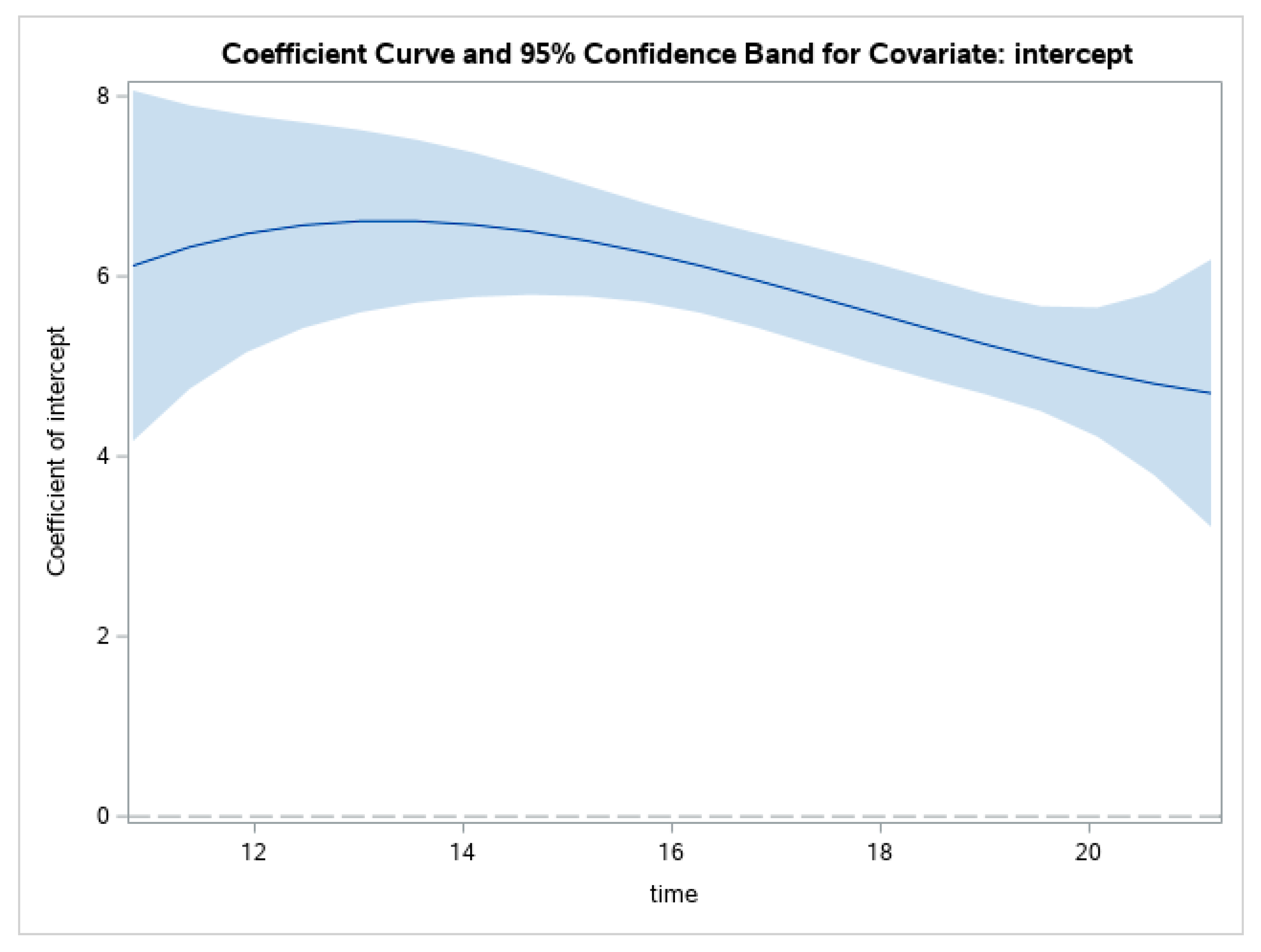
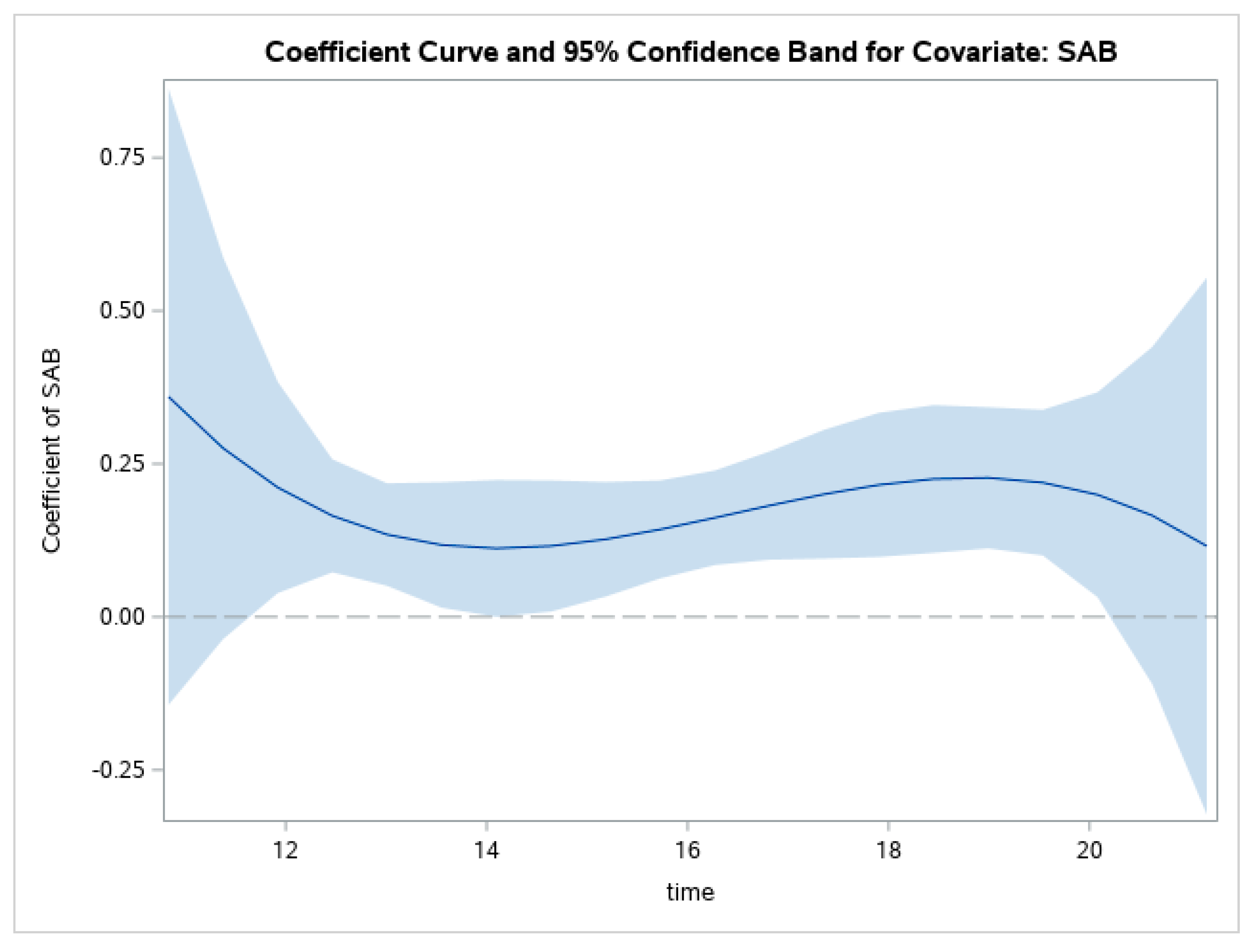
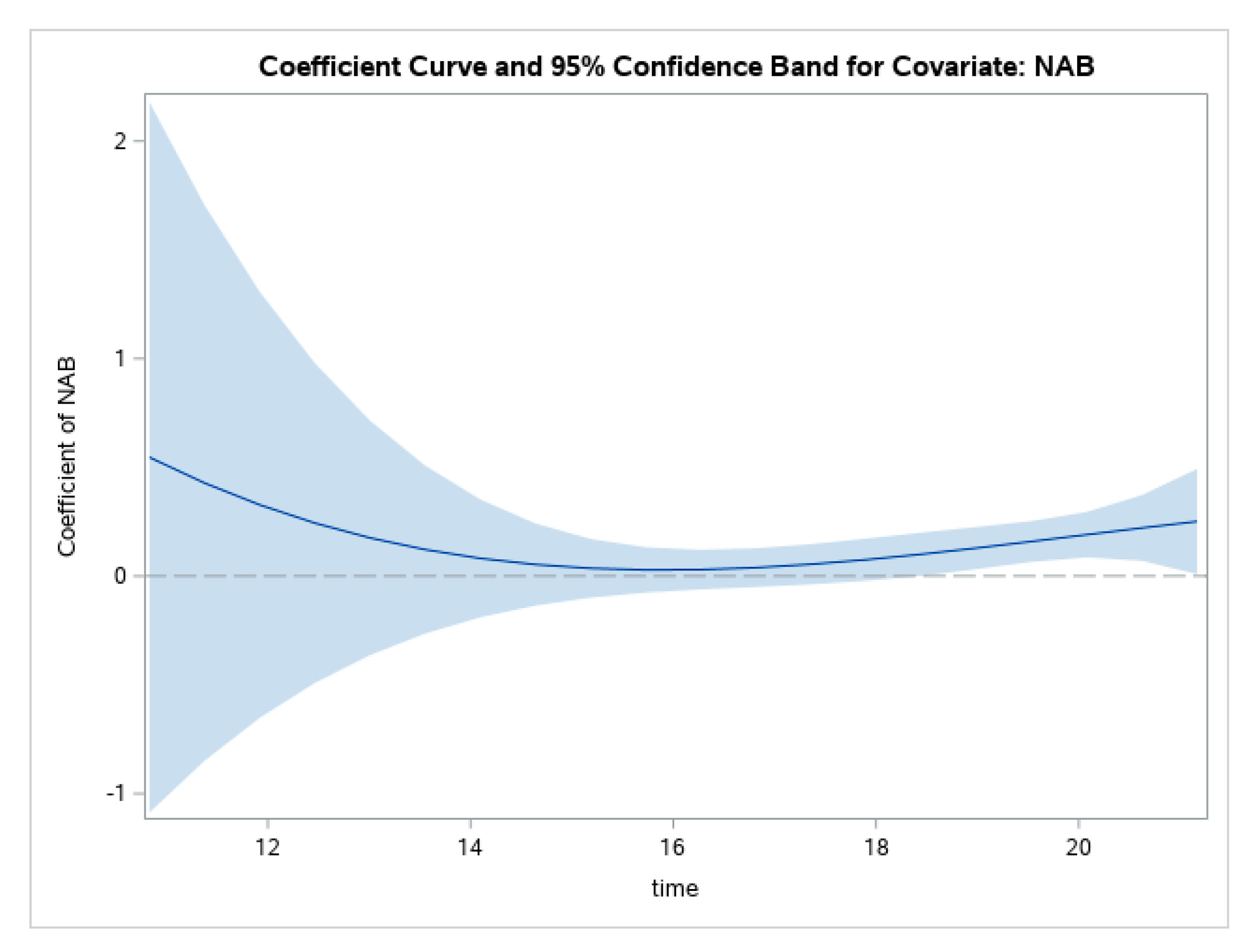
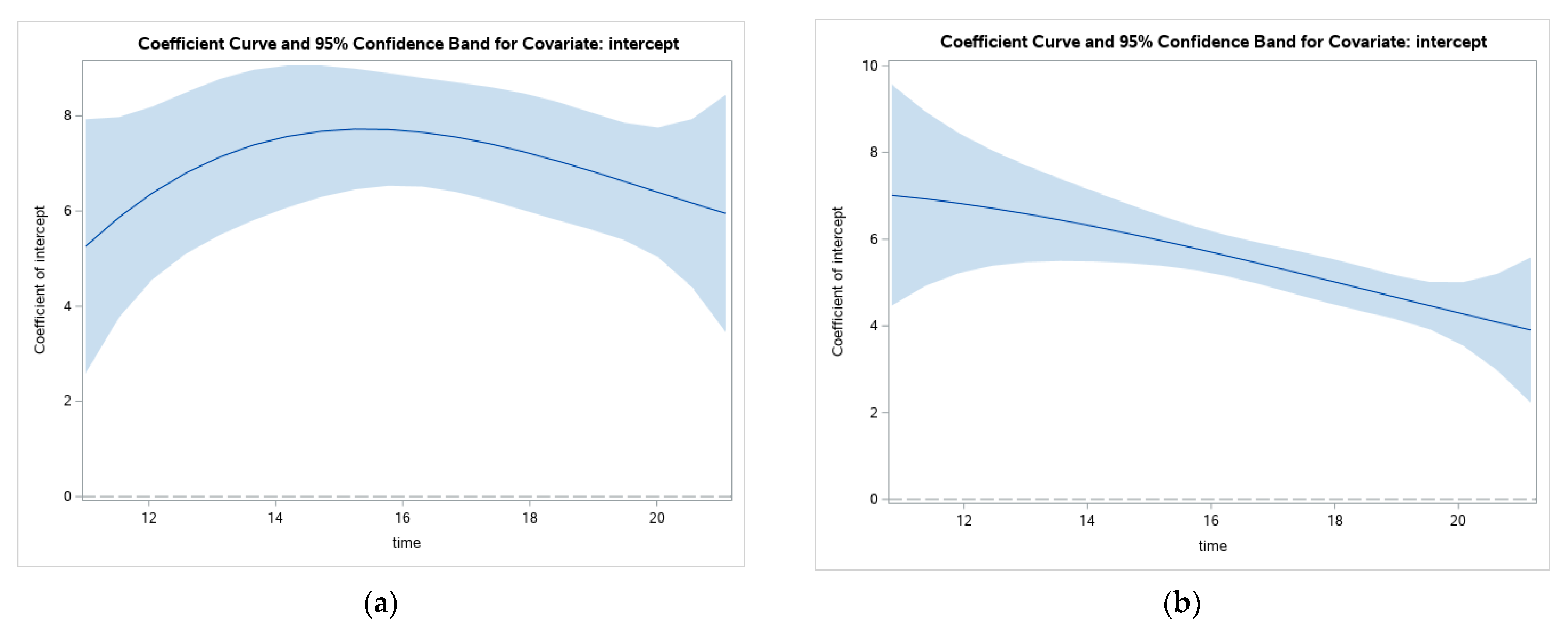
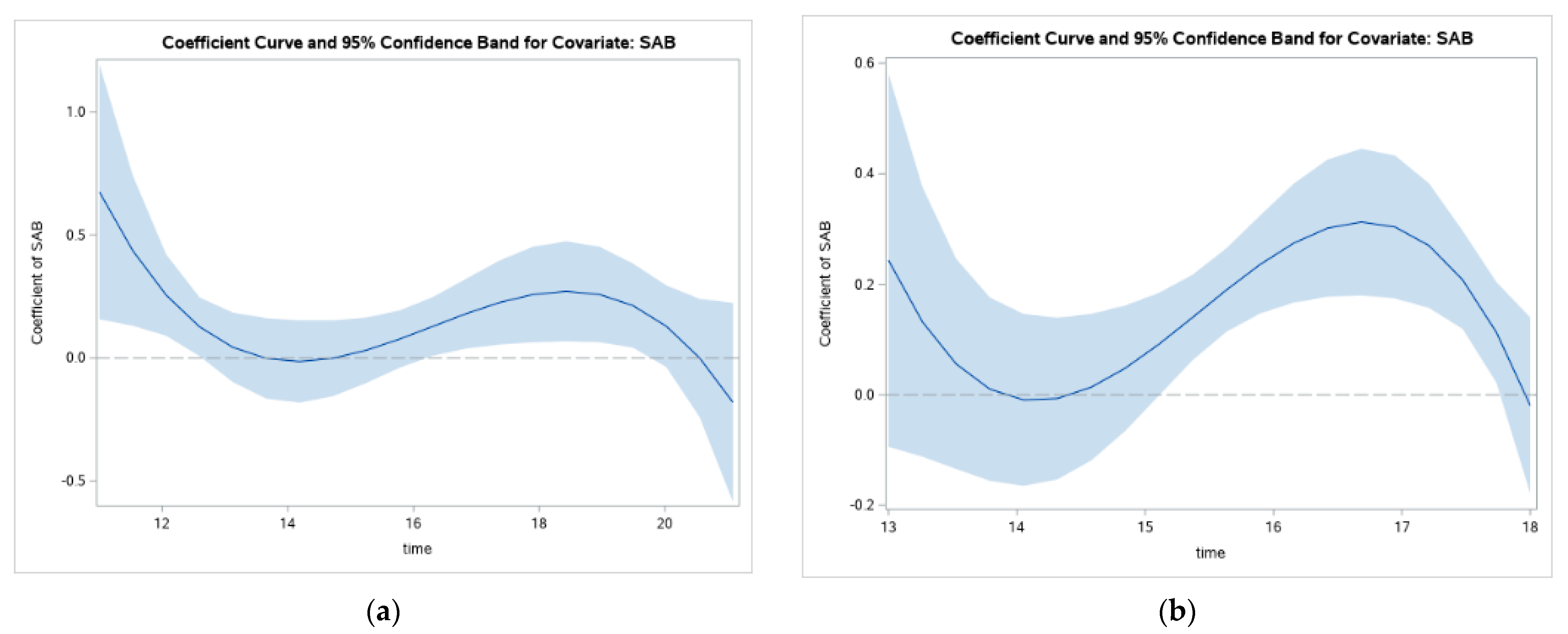
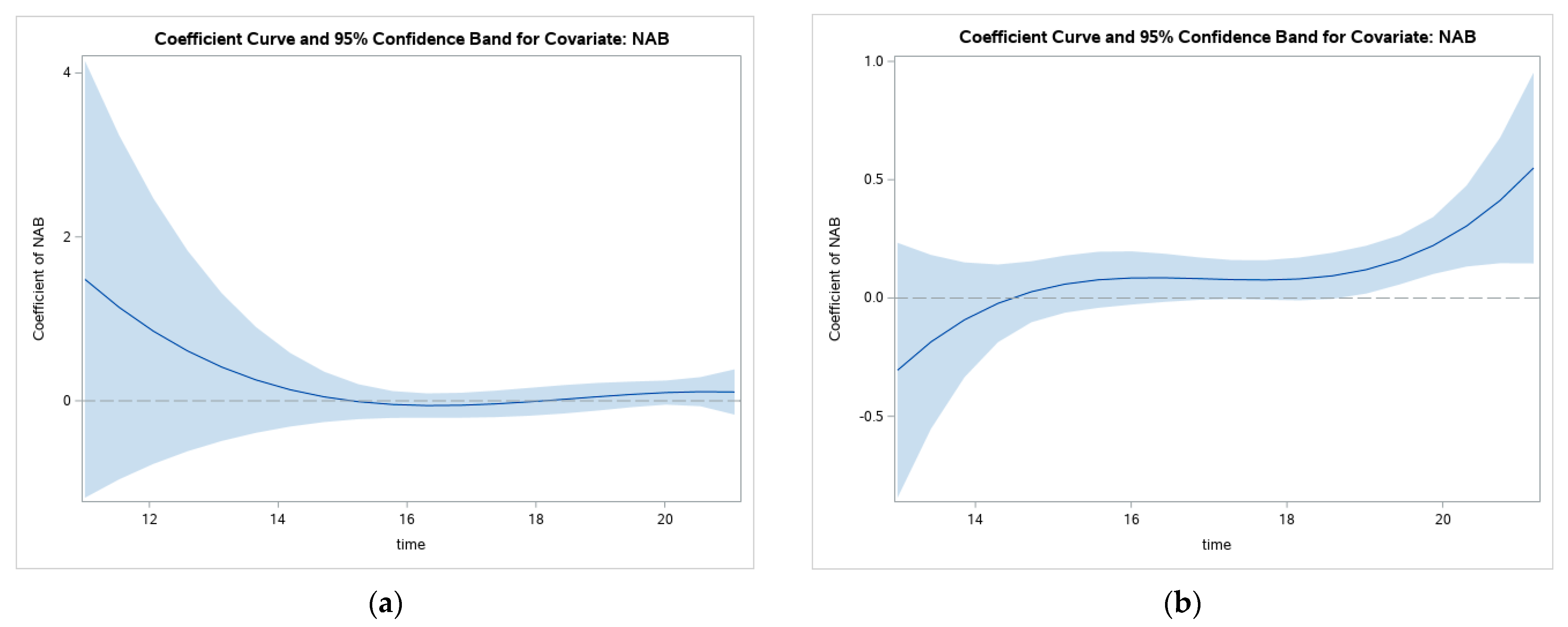
| Age | SAB | NAB | GHQ |
|---|---|---|---|
| 11 | 0.38 (1.06) | 0.86 (1.21) | 6.00 (0) |
| 12 | 3.44 (9.96) | 0.71 (1.25) | 6.22 (2.77) |
| 13 | 0.97 (3.13) | 2.51 (2.45) | 7.43 (3.78) |
| 14 | 1.52 (4.07) | 2.56 (3.29) | 7.16 (4.20) |
| 15 | 2.18 (5.60) | 3.29 (3.47) | 6.30 (2.98) |
| 16 | 3.48 (6.91) | 4.41 (4.25) | 6.65 (3.81) |
| 17 | 2.69 (6.38) | 4.68 (4.47) | 7.14 (4.44) |
| 18 | 1.66 (4.82) | 5.30 (4.66) | 5.62 (2.91) |
| 19 | 1.58 (4.82) | 5.78 (4.27) | 5.50 (3.26) |
| 20 | 1.51(3.90) | 5.55 (4.19) | 6.68 (5.07) |
| 21 | 1.19 (2.68) | 6.25 (4.64) | 5.75(2.70) |
| Possible Range | 0–36 | 0–28 | 0–48 |
Publisher’s Note: MDPI stays neutral with regard to jurisdictional claims in published maps and institutional affiliations. |
© 2022 by the authors. Licensee MDPI, Basel, Switzerland. This article is an open access article distributed under the terms and conditions of the Creative Commons Attribution (CC BY) license (https://creativecommons.org/licenses/by/4.0/).
Share and Cite
Merrilees, C.E.; Taylor, L.K.; Goeke-Morey, M.C.; Shirlow, P.; Cummings, E.M. Age as a Dynamic Moderator of Relations between Exposure to Political Conflict and Mental Health in Belfast, Northern Ireland. Int. J. Environ. Res. Public Health 2022, 19, 8339. https://doi.org/10.3390/ijerph19148339
Merrilees CE, Taylor LK, Goeke-Morey MC, Shirlow P, Cummings EM. Age as a Dynamic Moderator of Relations between Exposure to Political Conflict and Mental Health in Belfast, Northern Ireland. International Journal of Environmental Research and Public Health. 2022; 19(14):8339. https://doi.org/10.3390/ijerph19148339
Chicago/Turabian StyleMerrilees, Christine E., Laura K. Taylor, Marcie C. Goeke-Morey, Peter Shirlow, and E. Mark Cummings. 2022. "Age as a Dynamic Moderator of Relations between Exposure to Political Conflict and Mental Health in Belfast, Northern Ireland" International Journal of Environmental Research and Public Health 19, no. 14: 8339. https://doi.org/10.3390/ijerph19148339
APA StyleMerrilees, C. E., Taylor, L. K., Goeke-Morey, M. C., Shirlow, P., & Cummings, E. M. (2022). Age as a Dynamic Moderator of Relations between Exposure to Political Conflict and Mental Health in Belfast, Northern Ireland. International Journal of Environmental Research and Public Health, 19(14), 8339. https://doi.org/10.3390/ijerph19148339







